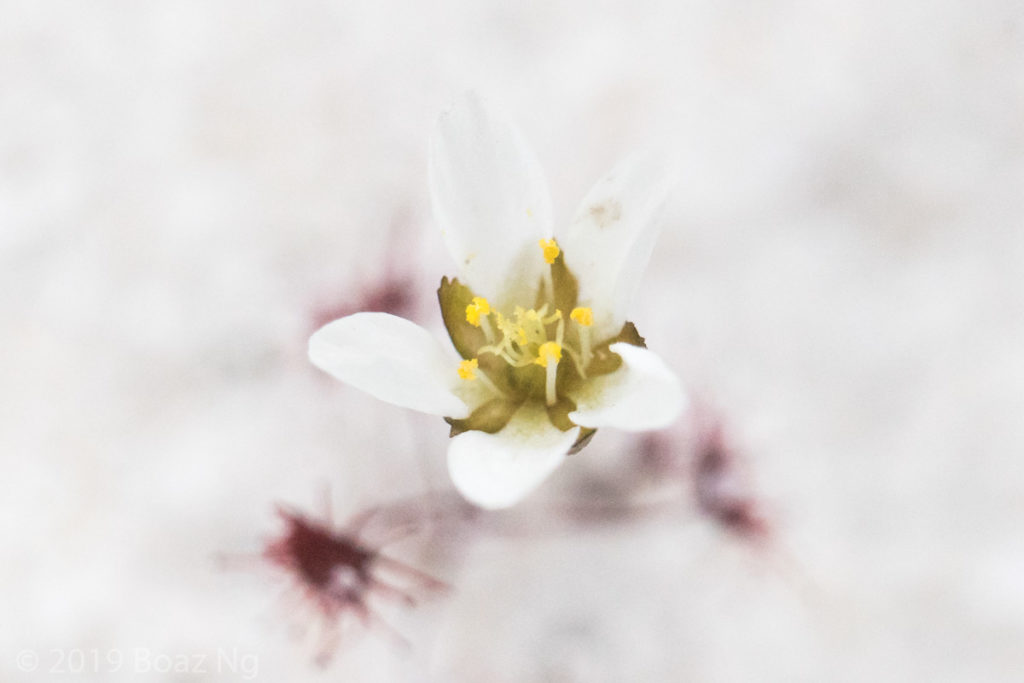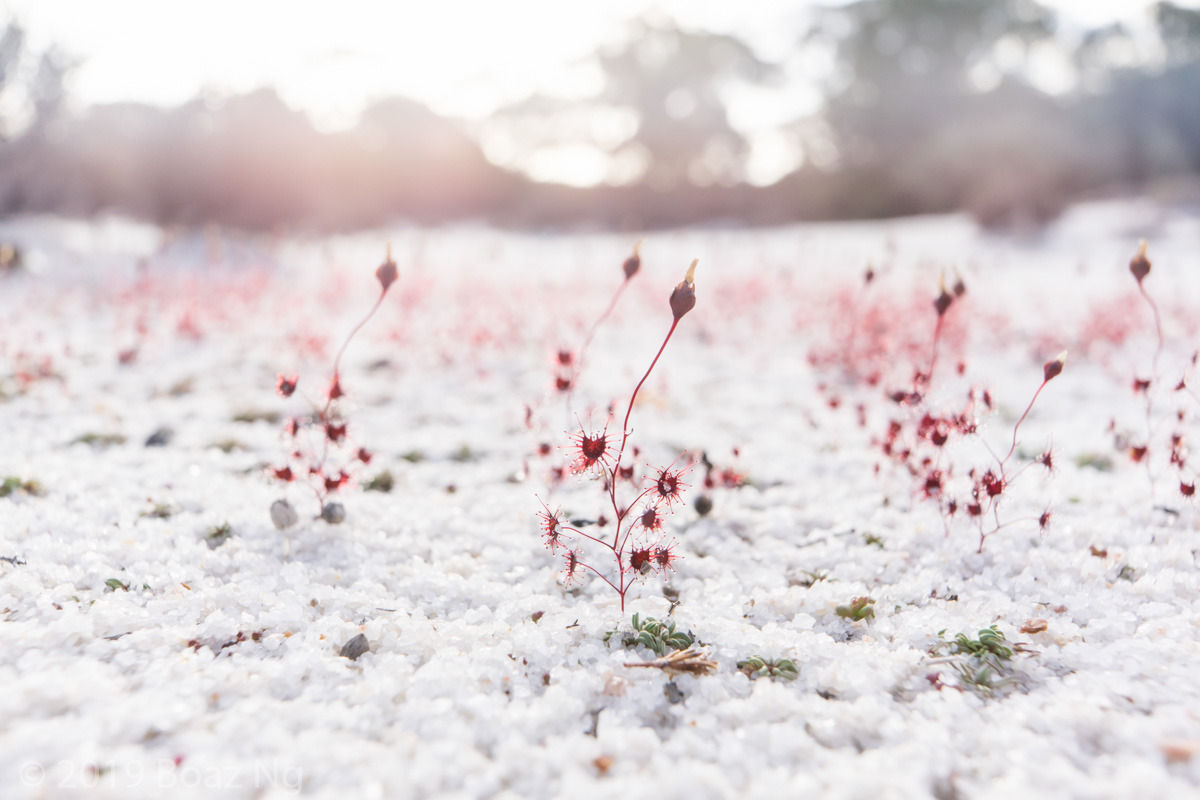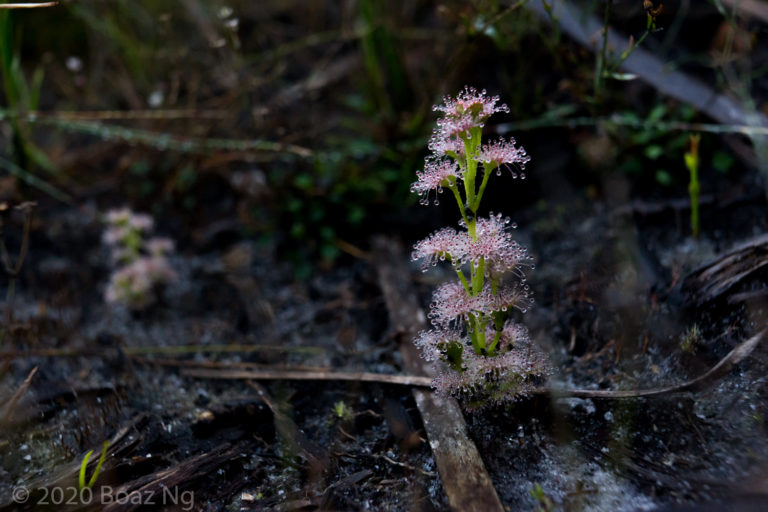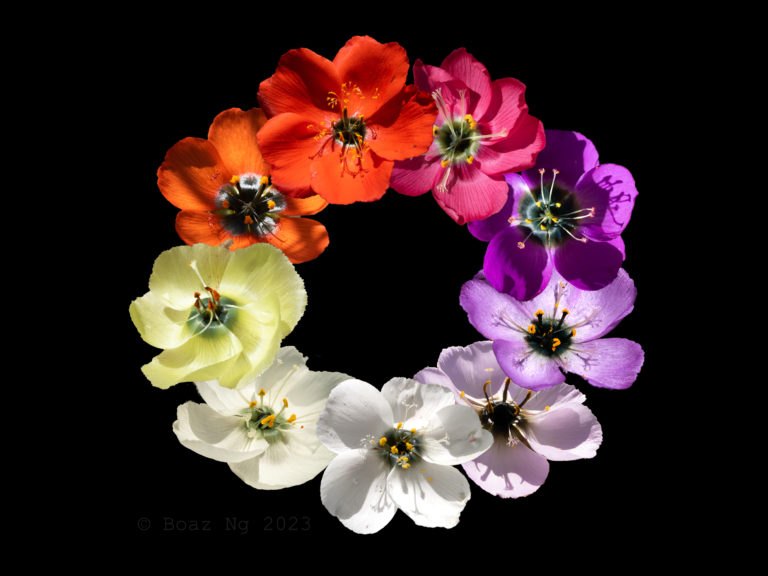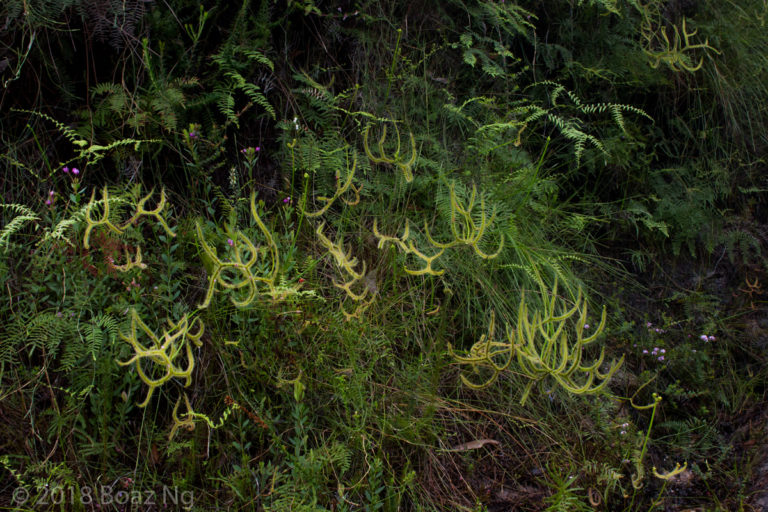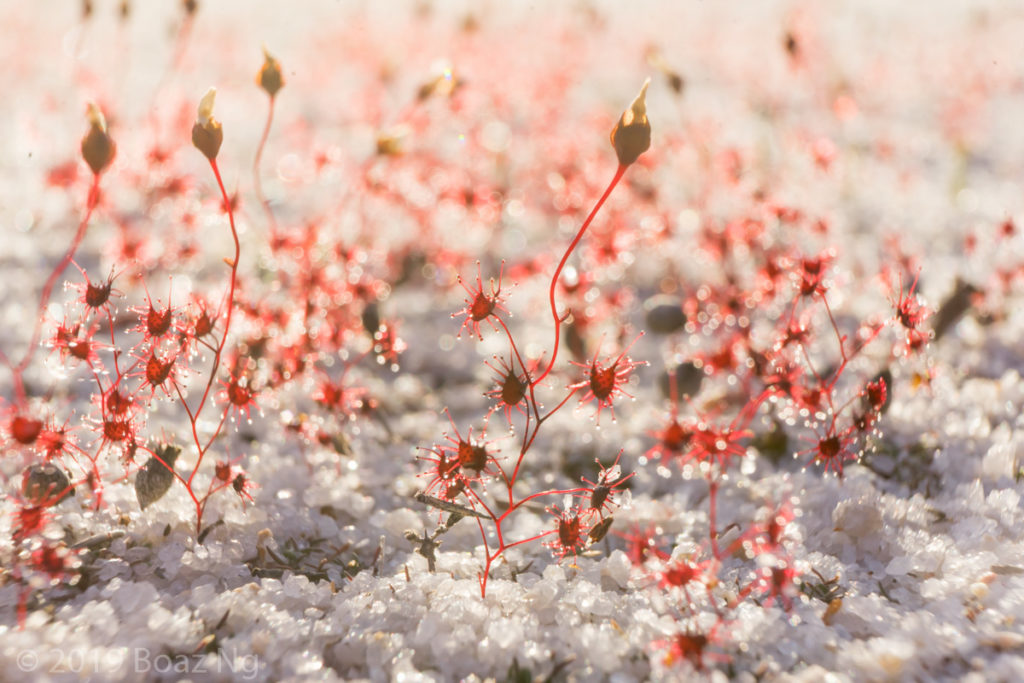
Drosera salina is a species of sundew that grows exclusively on the edge of salt lakes in the wheatbelt of Western Australia. I always found the specificity of its niche to be confusing, especially given that salt is detrimental to carnivorous species. In 2019, I embarked on an expedition to Western Australia to better understand this species.
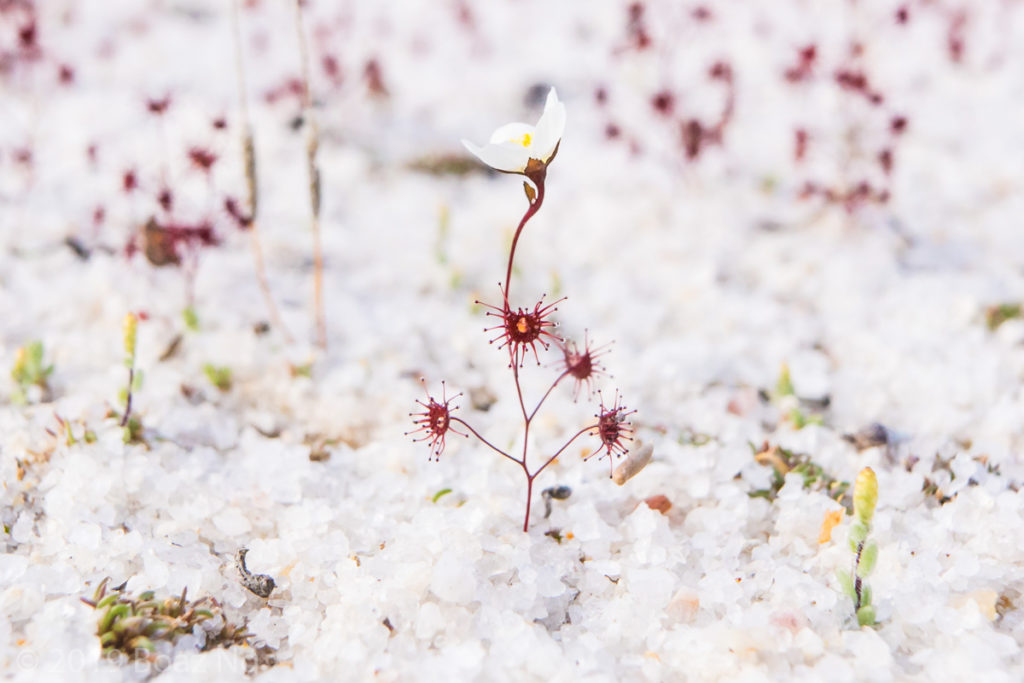
Drosera salina is small and wiry, growing to a maximum size of around 7 cm (but often reaching only half that height). The plant is colored dark red with an erect stem of alternating crescent shaped leaves. A large green basal rosette is retained by adult plants but this is generally buried below the sand. Towards the end of winter, a single white petaled flower with serrated sepals is produced at the end of the stem.
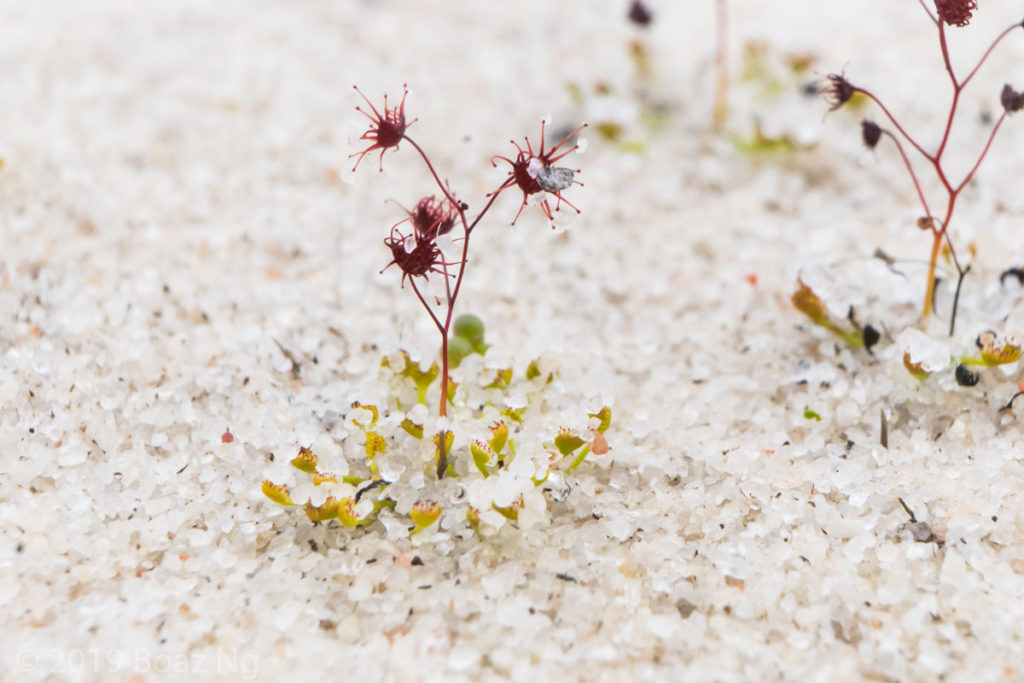
I was able to find Drosera salina at a few locations in the Southern Wheatbelt region. This area is characterised mainly by flat plains with a low drainage profile. Most watercourses in the region are considerably salty from the accumulation of minerals over millennia. Drosera salina, along with D. zigzagia are the only members of the genus exclusively associated with salt lakes. The two species are zonally segregated, with D. zigzagia growing on the flat sand plains in the bushland adjacent to the lakes. Drosera salina, however, grows in a thin margin on sloping edge of these lakes, above the water line of the full lake but below the flat plains of the bushland. The two species grow in fine coarse-grained quartz sand. On the surface, the sand is washed a brilliant white but is stained brown with silt just a few centimeters below.
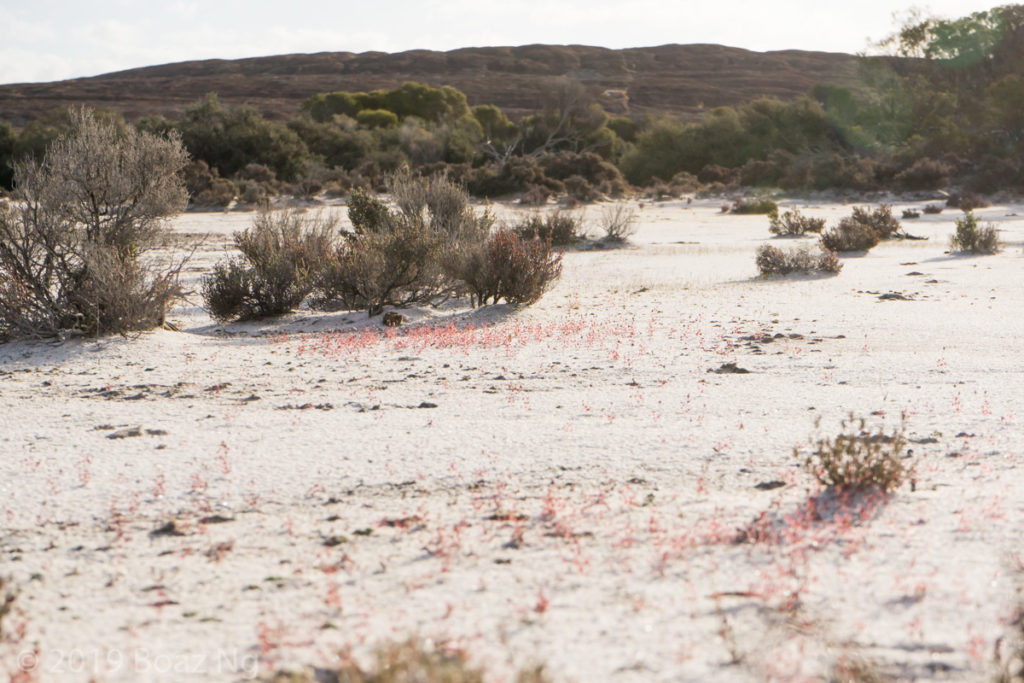
After seeing where the plants grow (and equally, where they don’t grow), I was able to form several hypotheses about their niche. It appears that both D. salina and zigzagia are adapted to grow in quartz sand, a substrate is naturally deposited in flood plains by waterways. D. salina also appears to require the seepage of water out of the surrounding soils. The natural topographic depression of the lakes allows for ground water to seep out to the surface from the surrounding plains. This could explain why I only saw the species around the deepest salt lakes as only these locations sunk below the winter water-table. The salinity of the lakes seemed to be coincidental, as practically all watercourses in the area are salty. Notwithstanding, the salinity of the lakes contributes to the unique scrubby ecology that permits the species to grow.
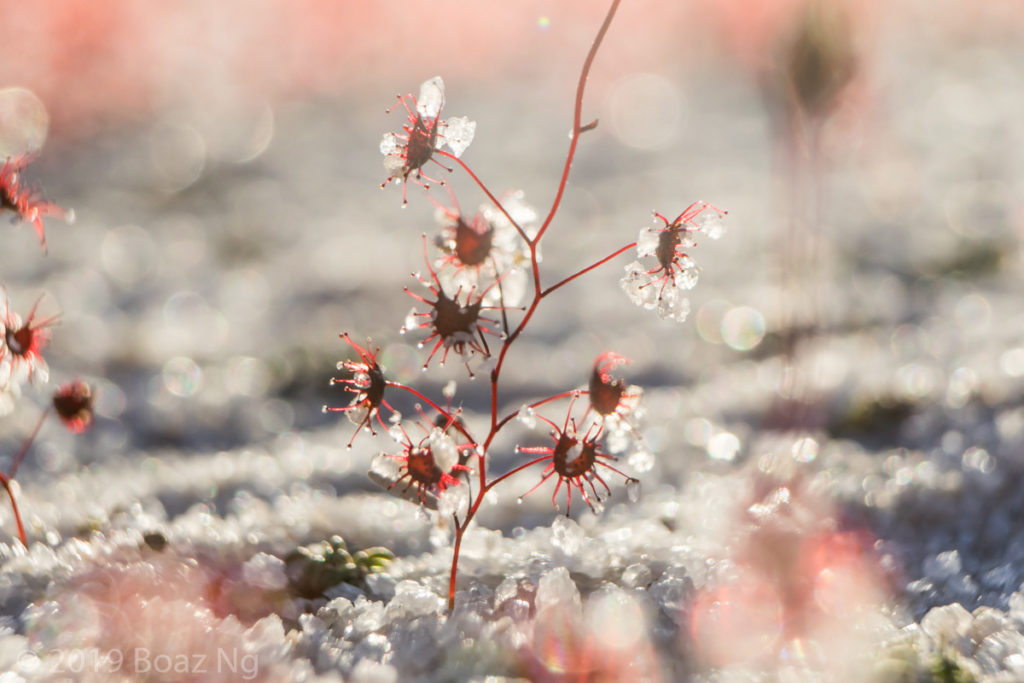
Drosera salina is listed as Priority Two in the WA conservation code, denoting it as a poorly-known species that is recorded in a few environmentally secure areas. It appears that its range is wide and it is often well protected within the boundaries of nature reserves. I found this species to be locally abundant at some sites, provided that its very specific niche was present. Nonetheless, the salt lake ecosystems in general are threatened by extensive agriculture within the region and associated effects such as the improper management of run-off and changes to groundwater. A broader existential threat comes from climate change, as species such as D. salina are reliant on the annual winter rains to grow. It is unknown how systematic changes to climate, rainfall patterns and hydrology may affect these amazing plants in the not too distant future.
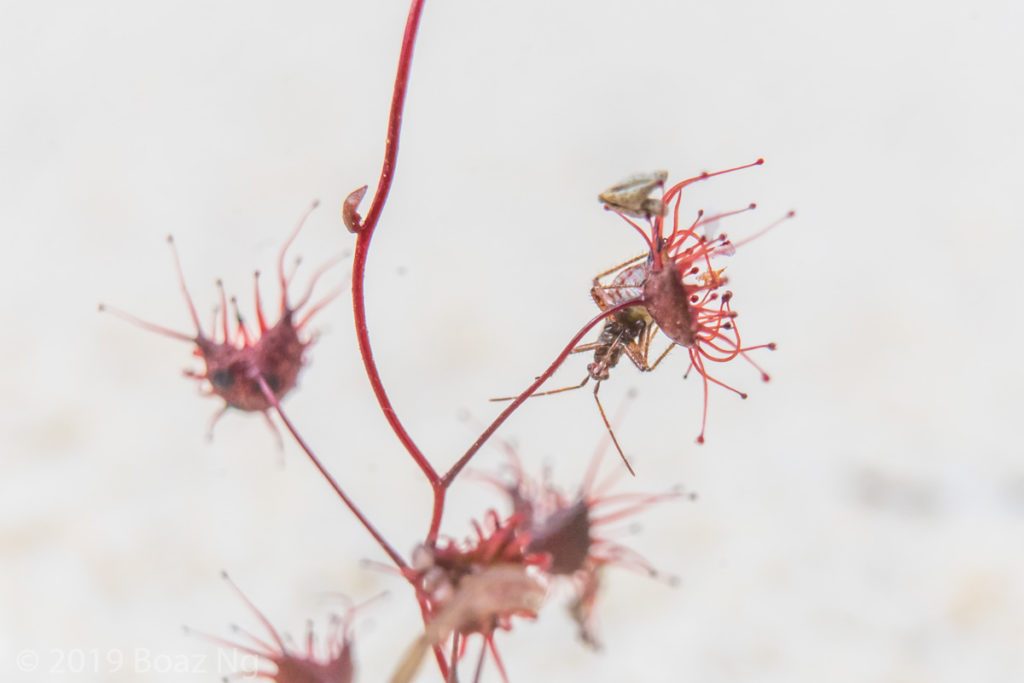
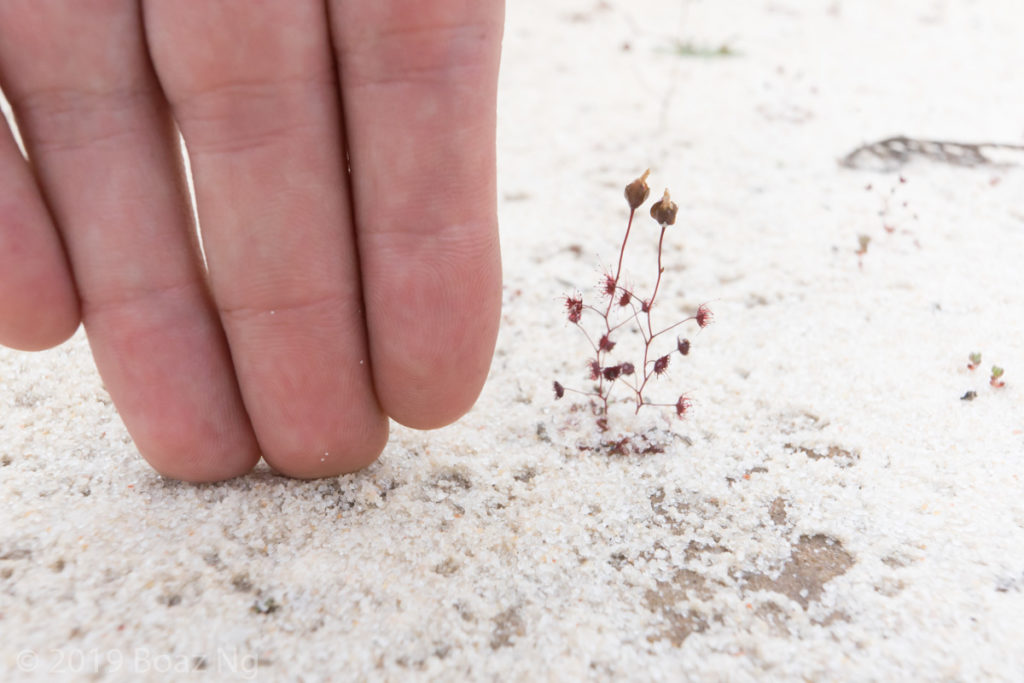
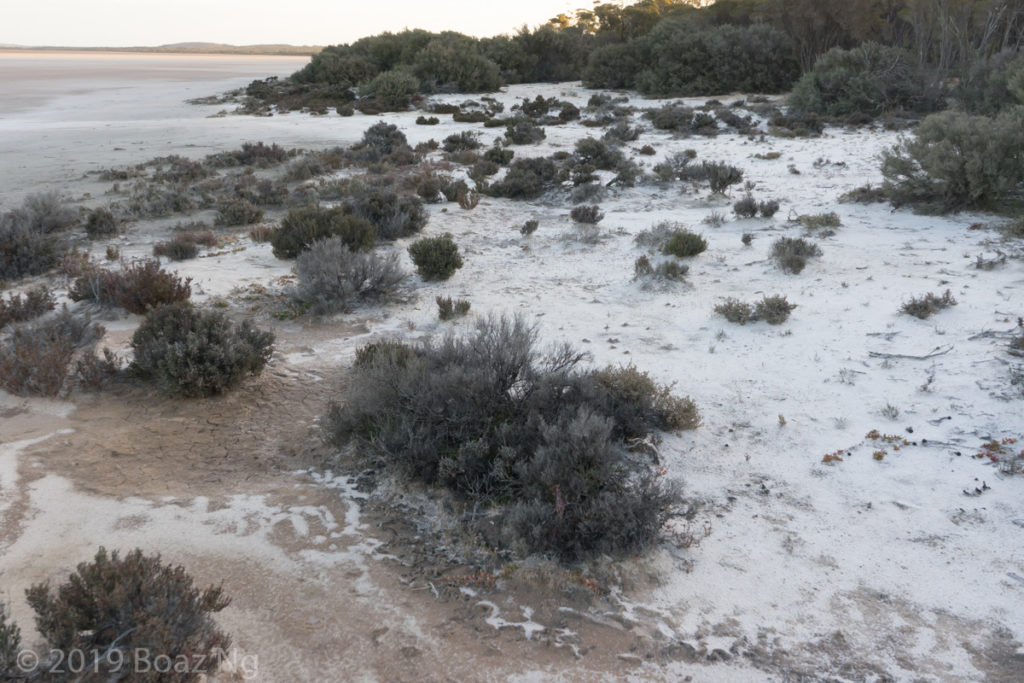
A typical habitat shot of Drosera salina. The species grows in a thin zone in the sloping edge between the bushland and the margin of salt lakes.
